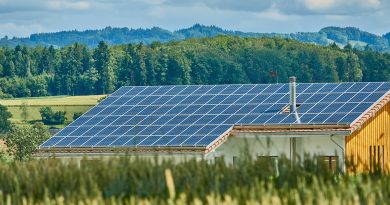How much energy does Solar Panels create?
In the realm of renewable energy, few innovations have captured the imagination and potential of harnessing the sun’s energy like solar panels. These remarkable devices have embarked on an extraordinary journey, revolutionising the way we generate electricity and paving the way for a sustainable future. In this article, we delve into the captivating story of solar panels, tracing their evolution and exploring them.
In today’s increasingly environmentally conscious world, the importance of sustainable energy solutions cannot be overstated. Among the various options available, solar panels have emerged as a shining beacon of hope. These unassuming devices possess an extraordinary capability: the power to convert sunlight into electricity, thereby revolutionising the manner in which we energise our residences, enterprises, and even entire urban centres. After a thorough investigation, we shall embark on a comprehensive exploration to delve into the primary objective of solar panels. Our aim is to unravel the intricate science that underlies their functioning while also shedding light on the immense potential they possess in shaping a greener and more sustainable future for all of humanity.
Empowering Homes through Solar Energy
In today’s rapidly evolving world, the need for sustainable and renewable energy sources has become more pressing than ever. As we strive to reduce our carbon footprint and mitigate the effects of climate change, harnessing the power of the sun has emerged as a promising solution. Solar energy, with its abundant and clean nature, has the At its very essence, the fundamental objective of solar panels is to effectively capture the inexhaustible energy radiated by the sun and transform it into practical and usable electrical power. Sunlight, as a remarkable source of energy, holds immense potential to efficiently fuel both residential and commercial establishments. By harnessing this abundant resource, we can significantly decrease our reliance on finite fossil fuels while simultaneously addressing the ecological consequences associated with energy consumption.
Discovering the Wonders of Photovoltaic Conversion:
In this enlightening piece, we delve into the captivating realm of solar panels and unravel the intricate mechanisms behind their operation. Prepare to be amazed as we demystify the marvels of photovoltaic conversion, shedding light on how these innovative devices harness the power of the sun to generate clean and sustainable energy.
The Photovoltaic Effect: Unveiling the Intricacies of Science
Solar panels function based on a fundamental principle known as the photovoltaic effect. Every individual panel is composed of a multitude of solar cells, typically crafted from silicon, a highly efficient semiconductor material. When the radiant energy of sunlight makes contact with these specialised cells, it triggers a fascinating phenomenon wherein electrons become energised, prompting their dynamic movement and consequent generation of an electric current. Direct current (DC) electricity can be seamlessly transformed into alternating current (AC), which is the preferred form of electricity used in residential and commercial settings, through the use of an inverter.
The pivotal role played by semiconductors in the realm of renewable energy cannot be overstated. These remarkable materials possess the unique ability to convert sunlight into electricity, paving the way for a sustainable and clean energy future. In this article, we will delve into the fascinating world of semiconductors and explore how they harness the power of the sun to generate electricity, revolutionising the
Semiconductors are of utmost importance in this intricate process. When the radiant energy of sunlight, consisting of minuscule entities known as photons, encounters the semiconductor material housed within a solar cell, a fascinating phenomenon unfolds. These photons, with their remarkable energy, have the power to liberate electrons from their atomic confines, thereby instigating the birth of an electric current. By strategically organising these individual cells into cohesive panels and harnessing the power of sunlight, a substantial quantity of electricity can be generated.
Solar Panels: A Powerful Force for Environmental Protection
In today’s world, where environmental concerns are at the forefront of global discussions, the significance of solar panels cannot be overstated. These remarkable devices have emerged as true guardians of the planet, offering a sustainable and clean energy solution that mitigates the adverse effects of traditional energy sources. In this article, we will delve into the environmental impact of solar panels, shedding light on their crucial role in safeguarding our planet.
Solar panels offer a multitude of environmental advantages that are truly remarkable. By utilising the boundless power of the sun, we are able to significantly diminish our dependence on non-renewable fossil fuels, leading to a substantial reduction in detrimental greenhouse gas emissions. The transition towards renewable energy sources represents a crucial milestone in the global effort to address climate change and safeguard the Earth for generations to come. Solar panels, with their silent presence, assume the role of steadfast protectors, safeguarding the environment while providing a sustainable energy alternative that is not only practical but also morally sound.



